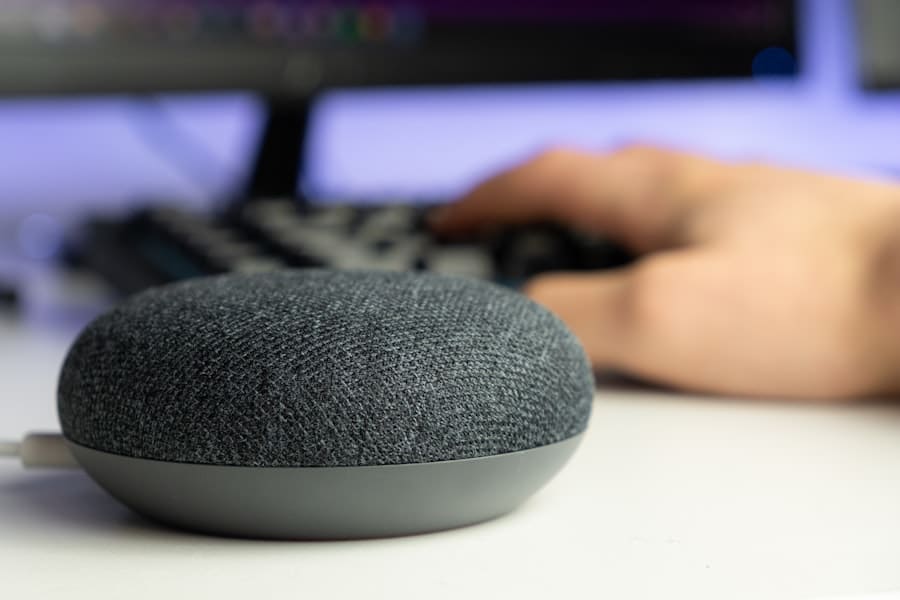The advent of artificial intelligence (AI) has revolutionized numerous sectors, and the realm of home automation is no exception. AI-powered smart homes represent a significant leap forward in how we interact with our living spaces, offering unprecedented levels of convenience, efficiency, and security. These homes are equipped with interconnected devices that communicate with one another, often learning from user behavior to optimize their functions.
The integration of AI into home environments not only enhances the quality of life for all residents but also provides tailored solutions for individuals with specific needs, particularly those with disabilities. As technology continues to evolve, the concept of a smart home has expanded beyond mere convenience. It now encompasses a wide array of features designed to improve accessibility and safety for vulnerable populations.
From automated lighting systems that adjust based on the time of day to advanced security systems that can detect unusual activity, AI-powered smart homes are becoming increasingly sophisticated. This transformation is particularly significant for individuals with disabilities, who can benefit immensely from the enhanced control and independence that these technologies provide. By leveraging AI, smart homes can adapt to the unique requirements of each resident, creating an environment that is not only functional but also empowering.
Key Takeaways
- AI-powered smart homes use advanced technology to automate and control various aspects of the home environment.
- Accessibility features in smart homes are designed to cater to the needs of people with disabilities, making it easier for them to navigate and control their living space.
- Voice-activated controls and personal assistants offer a hands-free way for individuals to interact with their smart home devices, making it more convenient for people with disabilities.
- Smart home devices can monitor health and safety, providing peace of mind for individuals and their caregivers, especially those with medical conditions or disabilities.
- Integration with mobility aids and assistive technology allows for seamless interaction between smart home devices and tools that individuals with disabilities rely on for daily living.
- Customization and personalization options in smart homes cater to individual needs, ensuring that the technology is tailored to the specific requirements of each user.
- Potential challenges and limitations in AI-powered smart homes include privacy concerns, technical issues, and the need for ongoing support and maintenance.
- Future developments and opportunities for improvement in smart home technology include enhanced compatibility with assistive devices, improved voice recognition, and expanded accessibility features.
Accessibility Features for People with Disabilities
Enhancing Independence through Automation
For instance, smart lighting systems can be programmed to respond to specific commands or schedules, allowing users with mobility impairments to control their environment without needing to physically reach for switches. This level of automation can significantly enhance independence, enabling individuals to navigate their homes more freely and safely.
Convenience and Ease of Use
Moreover, smart home technology can include features such as automated door locks and window shades that can be controlled remotely or through voice commands. These innovations are particularly beneficial for individuals with limited dexterity or strength, as they eliminate the need for manual operation. Additionally, smart thermostats can learn a user’s preferences over time, adjusting temperatures automatically to ensure comfort without requiring constant adjustments.
Promoting Autonomy and Dignity
Such features not only improve the quality of life for people with disabilities but also promote a sense of autonomy and dignity in their daily routines.
Voice-Activated Controls and Personal Assistants
Voice-activated controls have emerged as a cornerstone of smart home technology, providing an intuitive interface for users to interact with their devices. Personal assistants like Amazon’s Alexa, Google Assistant, and Apple’s Siri enable users to perform a wide range of tasks simply by speaking commands. This hands-free approach is particularly advantageous for individuals with physical disabilities who may find it challenging to use traditional interfaces such as touchscreens or remote controls.
The versatility of voice-activated systems extends beyond basic commands; they can manage multiple devices simultaneously, creating a seamless experience within the smart home ecosystem. For example, a user can instruct their personal assistant to dim the lights, adjust the thermostat, and play music all at once. This level of integration not only simplifies daily tasks but also fosters a more engaging and interactive living environment.
Furthermore, these systems are continually evolving, incorporating natural language processing and machine learning to better understand user preferences and improve responsiveness over time.
Smart Home Devices for Monitoring Health and Safety
Health and safety monitoring is another critical aspect of AI-powered smart homes, particularly for individuals with disabilities or chronic health conditions. Smart devices such as health monitors can track vital signs like heart rate and blood pressure, providing real-time data that can be shared with healthcare providers. This capability allows for proactive management of health issues and can lead to timely interventions when necessary.
In addition to health monitoring, smart home technology can enhance safety through features like fall detection systems and emergency alerts. For instance, some smart home systems are equipped with sensors that can detect when a person has fallen and automatically alert emergency services or designated caregivers. This feature is invaluable for individuals living alone or those who may be at higher risk of falls due to mobility challenges.
By integrating these safety measures into the home environment, AI-powered smart homes can provide peace of mind not only for residents but also for their families and caregivers.
Integration with Mobility Aids and Assistive Technology
The integration of AI-powered smart home technology with mobility aids and assistive devices represents a significant advancement in creating inclusive living environments. For example, smart wheelchairs equipped with navigation systems can communicate with home automation systems to facilitate seamless transitions between indoor and outdoor spaces. This integration allows users to control their surroundings more effectively while maintaining their independence.
Additionally, assistive technologies such as adaptive switches and communication devices can be connected to smart home systems, enabling users to control various aspects of their environment through customized interfaces. For instance, a user with limited mobility might use a sip-and-puff switch to operate lights or appliances within their home. This level of customization ensures that individuals can tailor their living spaces to meet their specific needs, enhancing both functionality and comfort.
Customization and Personalization for Individual Needs
One of the most compelling features of AI-powered smart homes is their ability to be customized and personalized according to individual needs. Smart home systems can learn from user behavior over time, adapting settings based on preferences and routines. For example, a user who typically wakes up at 7 AM might have their bedroom lights gradually brighten at that time each morning, simulating a natural sunrise.
This personalization not only enhances comfort but also promotes better sleep patterns. Furthermore, customization extends beyond simple preferences; it encompasses the ability to create specific profiles for different users within the same household. For instance, family members with varying needs can have distinct settings for lighting, temperature, and even security protocols tailored to their individual requirements.
This level of personalization ensures that everyone in the household can enjoy the benefits of smart home technology while accommodating their unique circumstances.
Potential Challenges and Limitations
Despite the numerous advantages offered by AI-powered smart homes, there are also challenges and limitations that must be addressed. One significant concern is the issue of privacy and data security. As smart home devices collect vast amounts of personal data to function effectively, there is an inherent risk associated with potential breaches or misuse of this information.
Ensuring robust security measures are in place is crucial to protect users from unauthorized access or data theft. Another challenge lies in the accessibility of technology itself. While many smart home devices are designed with inclusivity in mind, not all individuals may have the technical skills or resources necessary to implement these systems effectively.
Additionally, the cost associated with purchasing and installing advanced smart home technologies can be prohibitive for some families, particularly those on fixed incomes or with limited financial means. Addressing these barriers is essential to ensure that the benefits of AI-powered smart homes are accessible to all individuals, regardless of their circumstances.
Future Developments and Opportunities for Improvement
Looking ahead, the future of AI-powered smart homes holds immense potential for further advancements that could enhance accessibility and inclusivity for individuals with disabilities. As technology continues to evolve, we can expect improvements in machine learning algorithms that will enable smarter decision-making within home environments. For instance, future systems may be able to predict user needs based on historical data more accurately, allowing for even greater automation and personalization.
Moreover, collaboration between tech companies and disability advocacy groups could lead to the development of more inclusive products tailored specifically for individuals with diverse needs. By prioritizing user feedback during the design process, manufacturers can create devices that address real-world challenges faced by people with disabilities.
In conclusion, AI-powered smart homes represent a transformative shift in how we live and interact with our environments. By focusing on accessibility features, voice-activated controls, health monitoring devices, integration with mobility aids, customization options, and addressing potential challenges, these technologies have the potential to create more inclusive living spaces for everyone. As we continue to explore future developments in this field, it is essential to remain committed to ensuring that these advancements benefit all individuals, particularly those who stand to gain the most from enhanced accessibility and independence in their daily lives.
In a recent article on enicomp.com, the top trends on TikTok for 2023 were explored, showcasing the latest viral content and creative trends on the popular social media platform. This article provides valuable insights into the ever-evolving landscape of social media and digital content creation. For those interested in staying ahead of the curve and engaging with the latest trends, this article is a must-read. Check it out here.
FAQs
What are AI-powered smart homes?
AI-powered smart homes are residences equipped with artificial intelligence technology that allows various devices and systems to be controlled and automated. These homes use sensors, cameras, and other smart devices to monitor and adjust settings such as lighting, temperature, security, and entertainment.
How do AI-powered smart homes assist people with disabilities?
AI-powered smart homes can assist people with disabilities by providing them with greater independence and control over their living environment. For example, voice-activated assistants can help individuals with mobility impairments to control various devices and appliances, while smart sensors can detect and respond to specific needs, such as adjusting the height of countertops or turning on lights when a person enters a room.
What are some specific ways AI-powered smart homes can benefit people with disabilities?
AI-powered smart homes can benefit people with disabilities in numerous ways, including:
– Voice-activated controls for devices and appliances
– Automated adjustments to lighting, temperature, and other environmental factors
– Monitoring and alert systems for safety and security
– Integration with wearable devices and health monitoring technology
– Customized settings for accessibility and comfort
Are there any challenges or limitations to using AI-powered smart homes for people with disabilities?
While AI-powered smart homes offer significant benefits, there are also challenges and limitations to consider. These may include issues related to privacy and data security, compatibility with existing assistive devices, and the need for ongoing maintenance and support. Additionally, some individuals may require personalized solutions that go beyond the capabilities of standard smart home technology.



